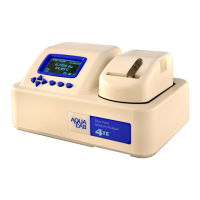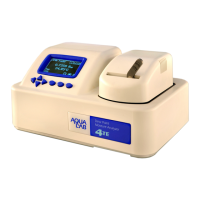How to fix an AquaLab 4TE that will not turn on?
- JJose NicholsAug 17, 2025
First, check that the power cord is securely attached to the back of the instrument and plugged into the power outlet. If it still doesn't turn on, a power surge may have blown a fuse. To replace the fuse: 1. Unplug the power cord. 2. Locate the panel where the power cord plugs in. The fuse box is on the right side of that panel. Press in on the release tab and pull the fuse-holder out. Pull the broken fuse(s) out and replace with a 1.25 Amp 250V fuse. 3. Replace the fuse-holder and push it into the fuse-well until the release tab snaps in place. 4. Connect the power cord and turn your instrument on. If the fuse blows again, a failed component may be the cause.


